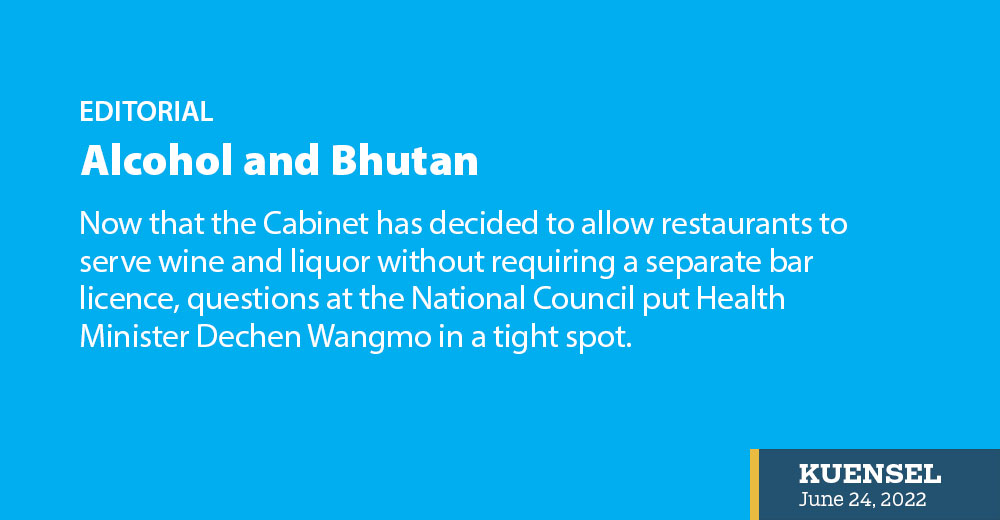Now that the Cabinet has decided to allow restaurants to serve wine and liquor without requiring a separate bar licence, questions at the National Council put Health Minister Dechen Wangmo in a tight spot.
Lyonpo’s justification was at best threadbare. While she said that the health ministry was concerned about the rising cases and financial burden due to alcohol liver diseases, it is hard to establish a link between easy access to alcohol and increased consumption. The argument does not hold water.
Our relationship with alcohol has been complicated. Addressing the problems and challenges related to alcohol so has at best appeared tentative. Some have even called for a total ban on alcohol in the country, which, unfortunately, won’t work. There are cultural aspects of alcohol to be considered. But that ought not to give us the excuse to not do something significant so that there is a sensible and much-needed regulation.
Alcohol may be part of our culture but alcoholism and problems related to alcohol are not. They have never been. It is precisely this new and growing reality that should worry us. Implications, in the long run, will be costly. The direct cost of treating one alcoholic patient is estimated at Nu 122,000, contributing to the escalation of health care costs. And it is growing—with it social and economic costs.
Because alcohol is one of the killers in the country, there is an urgent need to look at the destructive side of alcohol. We simply do not need more bars and alcohol outlets.
It’s a small consolation that studies and surveys will be carried out regularly which will give us a clear picture of the damage of alcohol to Bhutanese lives. Our hope is that politicians will rethink and rue their mistakes.
According to well-placed global research, people with alcoholism are up to 120 times more likely to commit suicide than those not dependent on alcohol—someone commits suicide every 40 seconds. This is also a serious problem facing the country today.
A recent survey found that in eastern Bhutan more than 58 percent of the respondents were alcoholics. In Thimphu, of the 36.4 percent of the adults who had consumed alcoholic beverages in the past year, 10.5 percent engaged in binge drinking. In rural areas, as much as 50 percent of the grain harvest of each household is used to brew alcohol each year. Underage drinking is also a serious problem.
Elimination of alcohol products altogether will not be possible. Our only hope lies in being able to limit or minimise consumption. This can be done.


